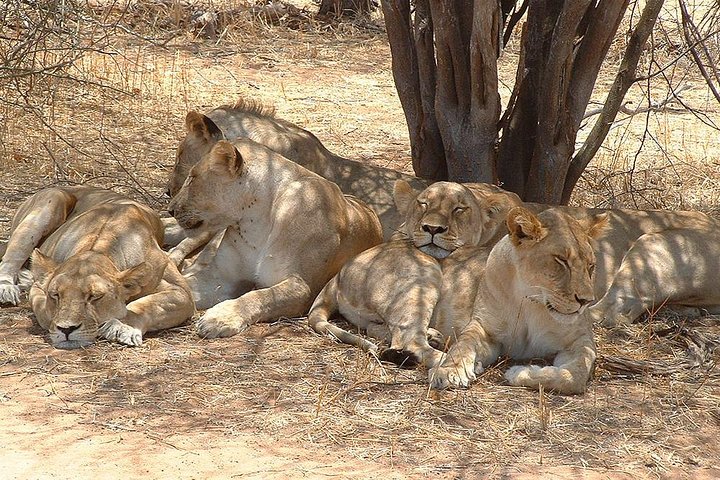Ruaha National Park Tanzania
Ruaha National Park is the second largest National Park in Tanzania, located 130km west of Iringa. The park occupies a fraction of 45,000 square kilometres (17,000 sq mi) of the Rungwa-Kizigo-Muhesi ecosystem, which is made up by the Rungwa Game Reserve, the Kizigo and Muhesi Game Reserves, and the Mbomipa Wildlife Management Area.
Ruaha National Park, the largest protected area in Tanzania, is a standout destination in the Southern Circuit. Known for its vast elephant population and one of Africa’s largest lion populations, Ruaha offers an authentic safari experience.

Ruaha National Park’s wild landscape, featuring mountains, acacia woodlands, and expansive savannas, provides a breathtaking backdrop for wildlife viewing. Unlike many other parks, Ruaha allows for supervised walking safaris, offering a closer look at cheetahs, wild dogs, and the elusive striped hyena. With nearly 600 bird species, Ruaha is also a birdwatcher’s paradise. Visitors can explore this remote park with minimal crowds, ensuring a tranquil and immersive experience.
All You Need To Know About Ruaha National Park:
Tanzania’s Untamed Wilderness Tucked away in the heart of Tanzania’s Southern Circuit lies Ruaha National Park, a vast expanse of untamed wilderness teeming with diverse wildlife and breathtaking landscapes. Spanning over 20,000 square kilometers, Ruaha is Tanzania’s largest national park and remains one of Africa’s best-kept safari secrets.
Here’s a glimpse into what makes Ruaha a must-visit destination for safari enthusiasts:
Abundant Wildlife In Ruaha National Park Tanzania
Ruaha National Park is renowned for its incredible biodiversity, boasting a diverse array of wildlife species. The park is home to one of the largest elephant populations in East Africa, along with significant concentrations of lions, leopards, and African wild dogs.

Other commonly spotted species include giraffes, zebras, buffaloes, and various antelope species. Birdwatchers will also delight in the park’s rich avifauna, with over 570 bird species recorded within its boundaries.
Remote and Untouched Landscapes Unlike some of Tanzania’s more popular safari destinations, Ruaha offers a sense of seclusion and tranquility due to its remote location and fewer visitors. The park’s rugged terrain is characterized by rolling hills, open plains, and ancient baobab trees, creating a picturesque backdrop for wildlife sightings. Ruaha‘s diverse landscapes provide a habitat for a wide range of wildlife species and offer visitors a chance to explore unspoiled wilderness away from the crowds.
Authentic Safari Experiences
Safari activities in Ruaha National Park are as authentic as they come, with game drives, walking safaris, and night drives offering unique opportunities to explore the park’s diverse ecosystems. Guided by experienced rangers and trackers, visitors can embark on thrilling adventures in search of elusive predators, majestic herbivores, and elusive bird species. Walking safaris provide a chance to experience the sights, sounds, and smells of the bush up close, while night drives offer a glimpse into the park’s nocturnal inhabitants.
Cultural Encounters
In addition to its natural wonders, Ruaha National Park is also rich in cultural heritage, with the indigenous Hehe and Gogo tribes calling the area home for centuries. Visitors can learn about traditional lifestyles, customs, and beliefs through cultural interactions and visits to local communities. Cultural tours offer insights into traditional hunting techniques, food preparation, and storytelling, providing a deeper understanding of the region’s history and culture.
Conservation and Sustainability
Ruaha National Park plays a crucial role in wildlife conservation and habitat protection in Tanzania. The park is part of the Ruaha-Rungwa-Kizigo-Muhesi ecosystem, one of the largest protected areas in East Africa. Conservation efforts focus on preserving the park’s biodiversity, combating poaching, and promoting sustainable tourism practices that benefit local communities and wildlife alike.